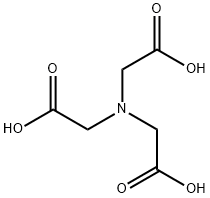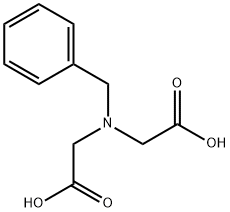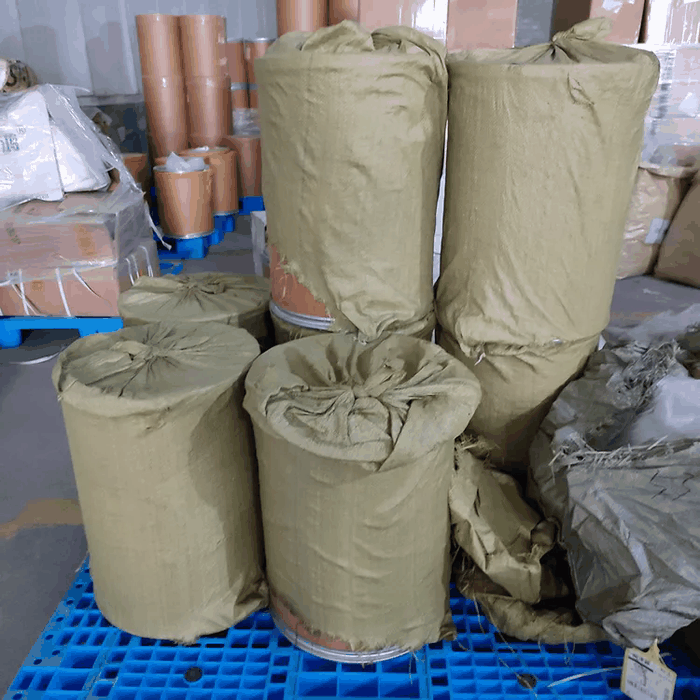Diethanolamine
Synonym(s):ß,ß′-Dihydroxydiethylamine, Bis-(ß-hydroxyethyl)-amine;2,2′-Iminodiethanol;Bis(2-hydroxyethyl)amine;Diethanolamine
- CAS NO.:111-42-2
- Empirical Formula: C4H11NO2
- Molecular Weight: 105.14
- MDL number: MFCD00002843
- EINECS: 203-868-0
- SAFETY DATA SHEET (SDS)
- Update Date: 2025-12-17 09:49:53

What is Diethanolamine?
Description
Diethanolamine is an organic base which has been used as an emulsifying and dispersing agent.It can also be used as a basic buffer, with optimal pH about pH 9, if titrated with HCl or other acid. Other uses include: to "scrub" gases, as a chemical intermediate, as humectant or softening agent.
Chemical properties
Diethanolamine is used as surface-active agent in metal-cutting fluids and oils, as a corrosion inhibitor, as a dispersant in agricultural chemical formulations, and as an intermediate in the production of other compounds such as fatty acid condensates of diethanolamine which are extensively used in soaps and cosmetics as emulsifiers, thickeners, wetting agents and detergents.
The Uses of Diethanolamine
Diethanolamine (DEA), similar to triethanolamine, is a versatile compound with applications as a surfactant, corrosion inhibitor through chemisorption, and a scrubbing agent for gases, particularly those containing carbonyl sulfide. It serves as an intermediate in the synthesis of rubber chemicals and is utilized in the production of surface-active agents for textile specialties, herbicides, and petroleum demulsifiers. Diethanolamine also functions as an emulsifier and dispersing agent in agricultural chemicals, cosmetics, and pharmaceuticals, and is used in the production of lubricants for the textile industry. Additionally, it acts as a humectant and softening agent, and is involved in organic syntheses. Furthermore, DEA is frequently used as a diluent for PNPP in ELISA assays.
Definition
ChEBI: Diethanolamine is a member of the class of ethanolamines that is ethanolamine having a N-hydroxyethyl substituent. It has a role as a human xenobiotic metabolite. It is functionally related to an ethanolamine.
Production Methods
Diethanolamine is prepared commercially by the ammonolysis of ethylene oxide. It is produced with monoethanolamine and triethanolamine by ammonolysis of ethylene oxide; diethanolamine is then separated by distillation.
Air & Water Reactions
Water soluble.
Reactivity Profile
2,2'-Iminodiethanol is an aminoalcohol. Amines are chemical bases. They neutralize acids to form salts plus water. These acid-base reactions are exothermic. The amount of heat that is evolved per mole of amine in a neutralization is largely independent of the strength of the amine as a base. Amines may be incompatible with isocyanates, halogenated organics, peroxides, phenols (acidic), epoxides, anhydrides, and acid halides. Flammable gaseous hydrogen is generated by amines in combination with strong reducing agents, such as hydrides. 2,2'-Iminodiethanol is hygroscopic. 2,2'-Iminodiethanol may be sensitive to exposure to air and light. 2,2'-Iminodiethanol can react with oxidizing materials, acids, CO2, copper alloys, aluminum, zinc, galvanized iron and copper.
Health Hazard
The irritant action of diethanolamine on theeyes can be severe. Direct contact of thepure liquid can impair vision. Irritation onthe skin may be mild to moderate. Theacute oral toxicity of this compound waslow in test animals. The toxic symptomsinclude somnolence, excitement, and musclecontraction.
LD50 value, oral (mice): 3300 mg/kg
The vapor pressure of diethanolamine isnegligibly low (<0.01 torr at 20°C (68°F)).At ordinary temperature, this compoundshould not cause any inhalation hazard. Themists, fumes, or vapors at high temperatures,however, can produce eye, skin, and respiratory tract irritation.
In contrast to monoethanolamine, dieth anolamine administered to mice at 1125 mg/kg/day caused no change in maternal mortality, litter size, or percentage survival of thepups (Environmental Health Research andTesting 1987).
Fire Hazard
Special Hazards of Combustion Products: Irritating vapors are generated when heated.
Contact allergens
Diethanolamine is contained in many products, as a metalworking fuid. Traces may exist in other etha- nolamine-containing fuids.
Safety Profile
Poison by intraperitoneal route. Moderately toxic by ingestion and subcutaneous routes. Mildly toxic by skin contact. A severe eye and mild skin irritant. Experimental reproductive effects. Combustible when exposed to heat or flame; can react with oxidizing materials. To fight fire, use alcohol foam, water, Co2, dry chemical. When heated to decomposition it emits toxic fumes such as NOx. See also AMINES.
Toxicity
Diethanolamine is used in topical and parenteral pharmaceutical formulations, with up to 1.5% w/v being used in intravenous infusions. Experimental studies in dogs have shown that intravenous administration of larger doses of diethanolamine results in sedation, coma, and death.
Animal toxicity studies suggest that diethanolamine is less toxic than monoethanolamine, although in rats the oral acute and subacute toxicity is greater. Diethanolamine is said to be heptacarcinogenic in mice and has also been reported to induce hepatic choline deficiency in mice.
Diethanolamine is an irritant to the skin, eyes, and mucous membranes when used undiluted or in high concentration. However, in rabbits, aqueous solutions containing 10% w/v diethanolamine produce minor irritation. The lethal human oral dose of diethanolamine is estimated to be 5–15g/kg body-weight.
The US Cosmetic Ingredient Review Expert Panel evaluated diethanolamine and concluded that it is safe for use in cosmetic formulations designed for discontinuous, brief use followed by thorough rinsing from the surface of the skin. In products intended for prolonged contact with the skin, the concentration of ethanolamines should not exceed 5%. Diethanolamine should not be used in products containing N-nitrosating agents.
LD50 (guinea pig, oral): 2.0g/kg
LD50 (mouse, IP): 2.3g/kg
LD50 (mouse, oral): 3.3g/kg
LD50 (rabbit, skin): 12.2g/kg
LD50 (rat, IM): 1.5g/kg
LD50 (rat, IP): 0.12g/kg
LD50 (rat, IV): 0.78g/kg
LD50 (rat, oral): 0.71g/kg
LD50 (rat, SC): 2.2g/kg
Potential Exposure
Diethanolamine is present in machining and grinding fluids and has been detected in workplace air in the metal manufacturing industry. It was present in bulk cutting fluids at levels ranging from 4 to 5% (Kenyon et al., 1993). Diethanolamine has also been reported to be present in wetting fluids used in road paving. A level of 0.05 mg/m3 was detected in a stationary sample at a slurry machine discharging a bitumen emulsion containing 0.2% of the amine. All personal exposures were below the detection limit (0.02 mg/m3) (Levin et al., 1994). In a German study (1992–94), diethanolamine was measured in samples of metalworking fluids in a range of 0–44% (n = 69). The number of samples with diethanolamine present steadily declined from 90% to 60% over the study period (Pfeiffer et al., 1996).
First aid
If this chemical gets into the eyes, remove anycontact lenses at once and irrigate immediately for at least15 min, occasionally lifting upper and lower lids. Seek medical attention immediately. If this chemical contacts theskin, remove contaminated clothing and wash immediatelywith soap and water. Seek medical attention immediately. Ifthis chemical has been inhaled, remove from exposure,begin rescue breathing (using universal precautions, including resuscitation mask) if breathing has stopped and CPR ifheart action has stopped. Transfer promptly to a medicalfacility. When this chemical has been swallowed, get medical attention. Give large quantities of water and inducevomiting. Do not make an unconscious person vomit.
Carcinogenicity
When DEA was administered cutaneously
to pregnant rats and rabbits during organogenesis,
developmental toxicity (skeletal variations)
was observed only in the rat and only at
doses causing significant maternal toxicity.
The 2003 ACGIH threshold limit valuetime-
weighted average (TLV-TWA) is 3ppm
(13mg/m3).
Metabolism
Treatment of Wistar or Sherman rats with diethanolamine caused increases in the
formation of hepatic phospholipids (Artom et al 1949). In addition, dietary
administration led to incorporation of ethanolamine into hepatic phospholipids
(Artom et al 1949), and repeated oral administration of diethanolamine in drinking
water (one to three wk) at a dose of 320 mg/kg/d was found to reduce the level of
incorporation of ethanolamine and choline into hepatic and renal phospholipids in
Sprague-Dawley rats (Barbee and H?rtung 1979b).
Dermal absorption of diethanolamine is suggested to occur in rats since Nnitrosodiethanolamine
was excreted in the urine of male Sprague-Dawley rats
which had been administered diethanolamine by dermal application and given
nitrite in their drinking water (Preussman et al 1981).
Storage
Diethanolamine is hygroscopic and light- and oxygen-sensitive; it should be stored in an airtight container, protected from light, in a cool, dry place.
Shipping
UN2491 Ethanol amine or Ethanolamine solutions, Hazard class: 8; Labels: 8-Corrosive material.
Incompatibilities
Diethanolamine is a secondary amine that contains two hydroxy groups. It is capable of undergoing reactions typical of secondary amines and alcohols. The amine group usually exhibits the greater activity whenever it is possible for a reaction to take place at either the amine or a hydroxy group.
Diethanolamine will react with acids, acid anhydrides, acid chlorides, and esters to form amide derivatives, and with propylene carbonate or other cyclic carbonates to give the corresponding carbonates. As a secondary amine, diethanolamine reacts with aldehydes and ketones to yield aldimines and ketimines. Diethanolamine also reacts with copper to form complex salts. Discoloration and precipitation will take place in the presence of salts of heavy metals.
Waste Disposal
Controlled incineration; incinerator equipped with a scrubber or thermal unit to reduce nitrogen oxides emissions
Regulatory Status
Included in the FDA Inactive Ingredients Database (IV infusions, ophthalmic solutions, and topical preparations). Included in medicines licensed in the UK. Included in the Canadian List of Acceptable Non-medicinal Ingredients.
Properties of Diethanolamine
| Melting point: | 28 °C (lit.) |
| Boiling point: | 217 °C/150 mmHg (lit.) |
| Density | 1.097 g/mL at 25 °C (lit.) |
| vapor density | 3.6 (vs air) |
| vapor pressure | <0.98 atm ( 100 °C) |
| refractive index | n |
| Flash point: | 280 °F |
| storage temp. | 2-8°C |
| solubility | H2O: 1 M at 20 °C, clear, colorless |
| form | Viscous Liquid or Low Melting Solid |
| color | APHA: ≤15 |
| Specific Gravity | 1.09 |
| PH | 11.0-12.0 (25℃, 1M in H2O) |
| pka | 8.88(at 25℃) |
| Odor | Mild ammoniacal; faint, fishy; characteristic. |
| explosive limit | 2.1-10.6%(V) |
| Water Solubility | MISCIBLE |
| Sensitive | Hygroscopic |
| λmax | λ: 260 nm Amax: 0.04 λ: 280 nm Amax: 0.02 |
| Merck | 14,3107 |
| BRN | 605315 |
| Exposure limits | TLV-TWA 3 ppm (~13 mg/m3) (ACGIH). |
| Dielectric constant | 2.8(25℃) |
| Stability: | Stable. Incompatible with carbon dioxide, strong acids, strong oxidizing agents. Deliquescent. |
| CAS DataBase Reference | 111-42-2(CAS DataBase Reference) |
| NIST Chemistry Reference | Diethanolamine(111-42-2) |
| IARC | 2B (Vol. 77, 101) 2013 |
| EPA Substance Registry System | Diethanolamine (111-42-2) |
Safety information for Diethanolamine
| Signal word | Danger |
| Pictogram(s) |
 Corrosion Corrosives GHS05  Exclamation Mark Irritant GHS07  Health Hazard GHS08 |
| GHS Hazard Statements |
H302:Acute toxicity,oral H315:Skin corrosion/irritation H318:Serious eye damage/eye irritation H373:Specific target organ toxicity, repeated exposure |
| Precautionary Statement Codes |
P202:Do not handle until all safety precautions have been read and understood. P280:Wear protective gloves/protective clothing/eye protection/face protection. P301+P312:IF SWALLOWED: call a POISON CENTER or doctor/physician IF you feel unwell. P302+P352:IF ON SKIN: wash with plenty of soap and water. P305+P351+P338:IF IN EYES: Rinse cautiously with water for several minutes. Remove contact lenses, if present and easy to do. Continuerinsing. P308+P313:IF exposed or concerned: Get medical advice/attention. |
Computed Descriptors for Diethanolamine
| InChIKey | ZBCBWPMODOFKDW-UHFFFAOYSA-N |
Diethanolamine manufacturer
JSK Chemicals
New Products
4,4-Difluoropiperidine hydrochloride tert-butyl 9-methoxy-3-azaspiro[5.5]undecane-3-carboxylate Indole Methyl Resin N-Isopropylurea N,N-Dicyclohexylcarbodiimide(DCC) MELDRUMS ACID 5-METHYLISOXAZOLE-4-CARBOXYLIC ACID Magnessium Bis glycinate Zinc ascorbate 1-bromo-2-butyne 2-acetamidophenol 9(10H)-anthracenone Erythrosin B, 4-Piperidinopiperidine 2-((4-morpholinophenylamino) (methylthio) methylene) malononitrile 2,4-dihydroxybenzaldehyde 3-(4-morpholinophenylamino)-5-amino-1H-pyrazole-4-carbonitrile Methyl 2-methylquinoline-6-carboxylate 2,6-dichloro-4-nitropyridine 4-Bromo-2-chlorobenzonitrile 2-(benzylamino)acetic acid hydrochloride 4-(tert-Butoxycarbonylamino)but- 2-ynoic acid 3,4-dihydro-2H-benzo[b][1,4]dioxepine 1-Phenyl-1-cycloprppanecarboxylicacidRelated products of tetrahydrofuran








You may like
-
 DI ETHANOL AMINE 99%View Details
DI ETHANOL AMINE 99%View Details -
 Diethanolamine 99%View Details
Diethanolamine 99%View Details -
 Diethanolamine (SQ) CAS 111-42-2View Details
Diethanolamine (SQ) CAS 111-42-2View Details
111-42-2 -
 Diethanolamine CASView Details
Diethanolamine CASView Details -
 Diethanolamine CASView Details
Diethanolamine CASView Details -
 Industrial Grade Di Ethanolamine Chemical, 200 L Drum, 98%View Details
Industrial Grade Di Ethanolamine Chemical, 200 L Drum, 98%View Details
111-42-2 -
 Diethanol amine Chemical, 111-42-2, Grade: Technical GradeView Details
Diethanol amine Chemical, 111-42-2, Grade: Technical GradeView Details
111-42-2 -
 Industrial Grade Diethanolamine Chemical Suppliers, 99%, 111-42-2View Details
Industrial Grade Diethanolamine Chemical Suppliers, 99%, 111-42-2View Details
111-42-2
